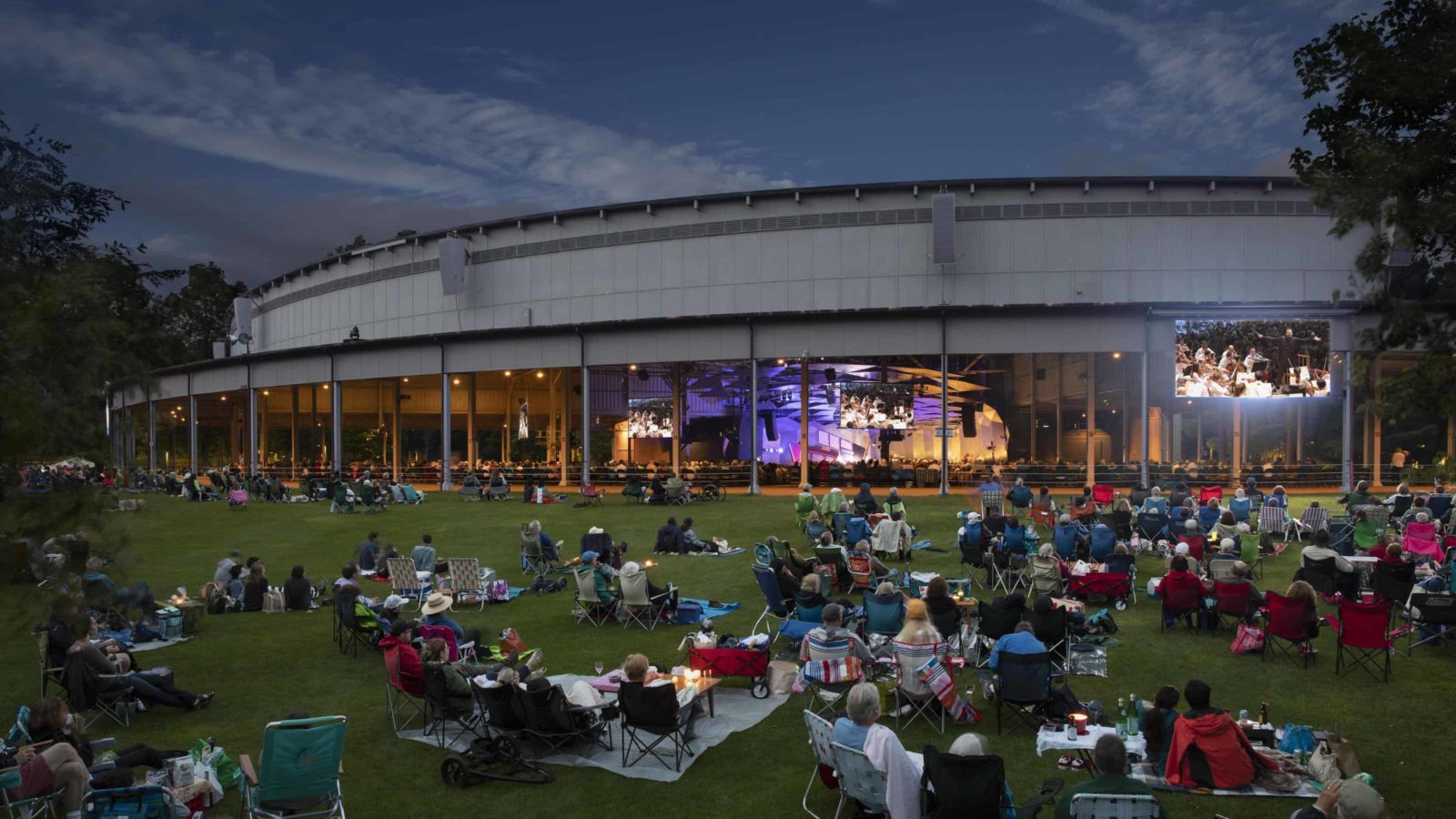The musicians open fast and and light, in held strings and high runs. Struck notes give momentum, running upward, growing stronger. The music taps into more than one century-old tradition, and at the same time it’s new.
On August 16, the Tanglewood Music Center Orchestra will perform Brian Raphael Nabors’ Iubilo.
For a jubilant fanfare, he wanted to make the music light — dancing with percussion and high harmonies, doubling wind and strings.
“The brass is prominent,” he said. “… It has an open and clear sound.”
Stefan Asbury will lead his work in a program that weaves together Smetana’s The High Castle, from My Country, Vaughan Williams’ Fantasia on a Theme by Thomas Tallis and Antonin Dvorak’s Symphony No. 7.
In many of their concerts this summer, Tanglewood is bringing in work by contemporary composers — not only in their annual contemporary music festival, but wound into concerts with music 200 or 300 years old.
They are young, diverse musicians, with far-reaching perspectives. At the end of July, among several concerts, the Boston Symphony Orchestra has performed Beethoven’s Piano Concerto No. 3 in C minor and Iranian-Canadian composer Iman Habibi’s Jeder Baum Spricht, Every Tree Speaks, as Habibi considers Beethoven’s love of the outdoors and asks how he would respond to the climate crisis today.
In the second half of the festival, Gabriela Frank is bringing Leyendas on August 2, Missy Mazzoli offers Sinfonia (for Orbiting Spheres) on August 8 and Elena Langer presents Suite from Figaro Gets a Divorce on August 14.
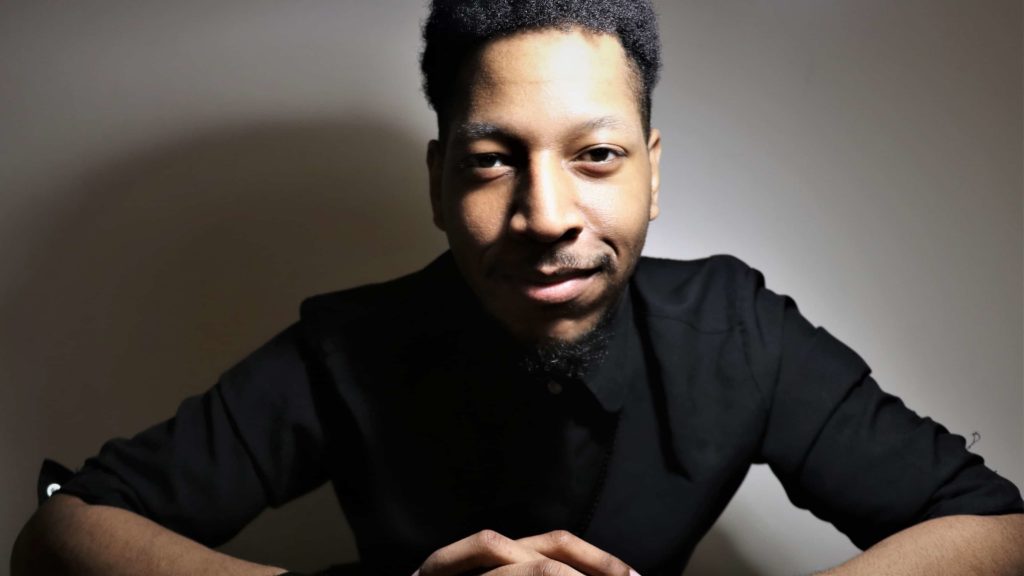
Composer and pianist Brian Nabors has spent July 2021 as a composition fellow at Tanglewood. Photo courtesy of the artist.
Like Nabors, they all have a strong grounding in orchestral music. He has spent six weeks at Tanglewood this summer as a composition fellow. Tanglewood has given him time, he said, to challenge himself with pieces for his fellows to perform and preparing for longer new works ahead.
“Being at Tanglewood has relit my fire in a way I haven’t had since my early 20s,” he said, “and I’ve just turned 30. … My Tanglewood time is the time I have to dream.”
He comes from Birmingham, Alabama, and his musical background is as broad as his experience — from a 2020 Fulbright scholarship to Sydney, Australia to residencies across the country. He holds a Doctor of Musical Arts and Master of Music degree in Composition from the University of Cincinnati College-Conservatory of Music.
He also performs as a pianist in R&B/Neo Soul band. His influences too stretch widely — Gospel, hymns, movie music — including John Williams, whom he had seen on the Tanglewood campus a few days before.



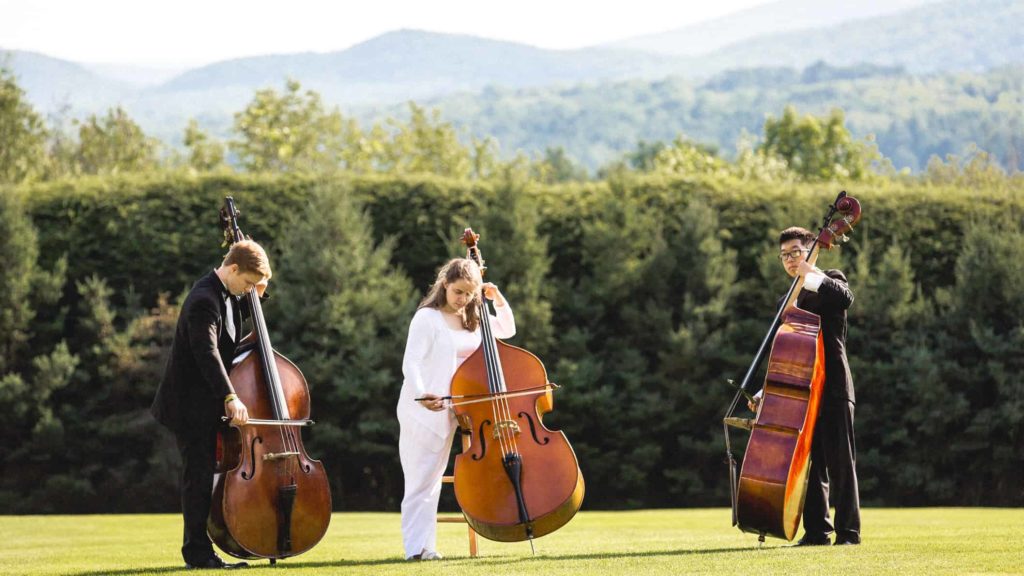
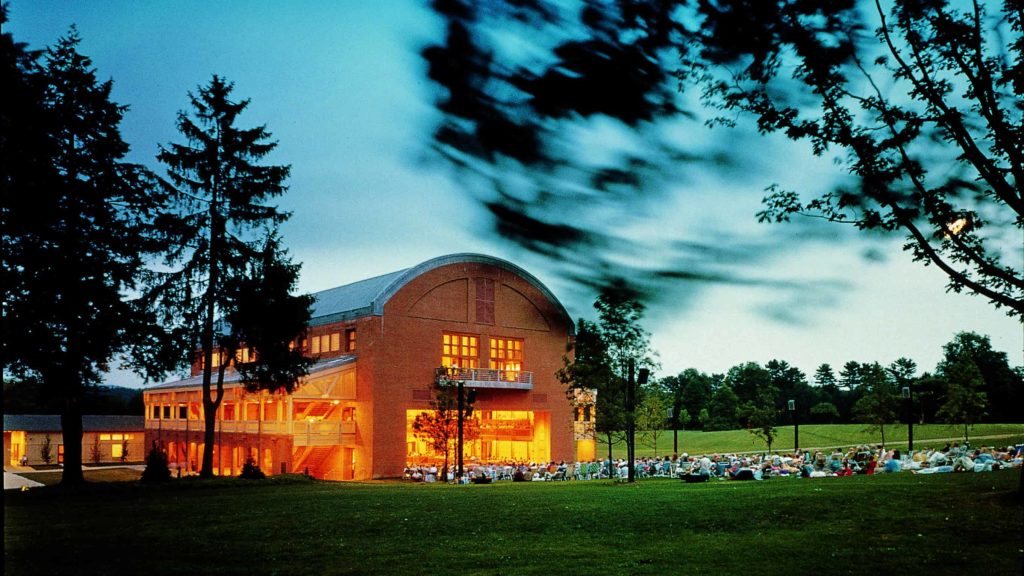

“A lot of his music influenced me early on,” Nabors said. “(Iubilo) has a lot of that excitement, that kind of cinematic deep rich orchestration … And early on it was very much Gospel and R&B, being in a car in a Saturday riding with my sister to the mall or something — that sound would always be everywhere. My mother took me around to different concerts.”
His home has a rich musical history.
“Birmingham is an interesting place,” he said, “because it’s in the middle of all these cities that are known for different musical styles. We have New Orleans to the southwest, Atlanta to the east, Memphis to the north, and Nashville.
“We used to have all these festivals where everyone would come and play different kinds of music, from Rock to jazz to R&B. I got an earful of all of that, and now I’m able to forge out my own sound from all these influences.”

Iranian-Canadian composer Iman Habibi brings Every Tree Speaks to Tanglewood. Press photo courtesy of the composer.
At Tanglewood this summer, he has found it powerful to hear the TMC fellows perform his work and to talk with composers.
“Thomas Adès is here this week,” he said. “We’ve had master classes with John Harbison, George Lewis, Osvaldo Golijov, Joan Towers … it’s very encouraging to here folks from past generations, who have sewn so many seeds in American, music giving us the baton and encouragement to go on.”
He has spent four weeks here, sharing time with one other composition fellow and about 70 music fellows — about half the usual size, he said. Because of Covid, Tanglewood has scaled down their teaching program this summer, as they’ve scaled down their concert season.
“It’s really given us a chance to learn each other,” he said, “learn each other’s names and spend so much time with one another and just talk, learn about each others’ lives and well-being.”

The Boston Symphony Orchestra will perform recent work by composer and violinist Jessie Montgomery at Tanglewood. Press photo courtesy of the composer.
The program met him with a kind of challenge and playfulness, as he describes it. In his first few days, his mentors gave him a day to write a violin duet, and then a piece for violin and bass.
“We had 24 hours to write it and turn it in,” he said, “and then your friends, the other fellows who are in the orchestra, they’ll play it.”
“We had short concert for me and my other fellow showcasing these works, and we had recordings put out of them. It’s a beautiful thing to collaborate in that way.”
Then both composition fellows created or arranged a work for the large chamber ensemble, in about six days — and they got to lead the group.
“I took orchestral conducting for two years,” he said. “It was my minor when I was doing my doctorate. I have conducting experience, so I was excited going into it.”
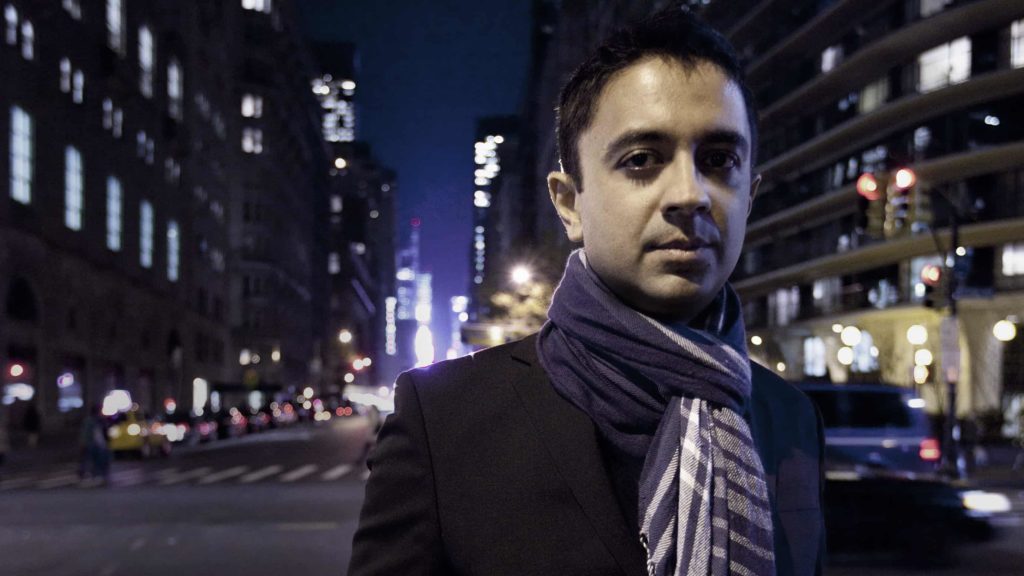
Compooser and pianist Vijay Iyer has earned international recognition for his many collaborations.
Thinking of their share excitement, as they create new work together, he raises a question — What is contemporary classical music?
In this country, ‘classical’ music often connects to Europe in the 17th, 18th and 19th centuries — with their close harmonies, their keys and octaves, and their instruments.
But contemporary composers bring their own perspectives. Like Nabors, they may combine the breadth of an orchestra with influences from many genres and places. They may vary instrumentation or draw on classical musical traditions from many parts of the world, from African pentatonic scales to Indian ragas to Middle Eastern maqams (musical modes) and microtones.
“I’ve been pondering this for awhile now,” he said, “and I’m leaning toward disbanding the word ‘classical’ … in terms of what is written today. It really puts that stigma on it, that you have to be dead and ancient and that it’s preserved somehow.
“And we hope it all gets preserved. But I would say contemporary concert music, because there are so many crossovers of genre happening in the concert hall now that it’s becoming a more welcoming space for everyone, no matter what genre you come from. It’s becoming more inclusive all the way around.”

The Tanglewood lawn in Lenox looks out over Stockbridge Bowl at sunset.
“I think of it as concert music,” he said, “because it gives this element of describing as something that takes more preparation than a pop concert with a live band, the act of going into a concert hall and hearing these sounds come to life after they’ve been prepared by the composer over months.”
He sees a growing number of orchestras and concert halls challenging the idea of how classical music is traditionally played, and he enjoys their open inventiveness — someone performing Bach in 2021 might bring in collaborative artists to pair with him, or put a drum set on stage to back up a bass clarinet.
The idea is not to change the music completely, he said, but to preserve it — “to redefine it so it doesn’t die … to have those elements of the old and the new, and to always be present to what’s here and now.”
Not everyone responds openly to change, he said.
He deals with surprise from people who don’t expect someone who looks like him, from Birmingham Alabama, to be writing the kind of music he is writing, no matter his education and degrees. But just by being there, in the concert space, and creating powerful and beautiful music, he helps to lead an ongoing change.
“We’re just human beings that have different stories to tell,” he said. “… The music will always open the door, start the conversation, change a person’s heart, mind, feeling, judgment, all of that.”

Composer and pianist Brian Nabors has spent July 2021 as a composition fellow at Tanglewood. Photo courtesy of the artist.
Classical means a tie to the past, he said, a tradition that stretches over centuries.
“That’s all I would think of any time I think of it — history. You can see American classical music forming — it’s very young, but of course it’s very present and evolving, just like so many other musical styles in the world.”
He thinks of Dvorak, whose work will appear in the BSO’s concert alongside his. Dvorak is known for bringing in many American musical influences in his music, drawing on Indigenous music, Black American music and more, drawing in rhythms, chord structures, harmonies.
“I’d take it as cultural appreciation,” Nabors said. “It’s just another voice for folks — all those folk melodies, all those spirituals, everything. The tunes were born and bred here, just like the music that was brought over was born and bred in whatever country it came from — true American music is all the genres that developed as a result.”
He finds that alloy a strength.
“Like myself, being influenced by all sorts of different traditions, its so great to be able to pair those things and as an American think about what it really means to be an American composer — that we’re all immigrants anyway, and it’s all just sound. It’s about finding innovative ways to tell stories from wherever we come from, the understanding that they’re not all going to look the same just because a person is from a certain place or looks a certain way.
“No human is monolithic, no race, gender, whatever you can think of. We’re all over the place, and that’s the beautiful thing about this country.”

A family rests in the shade on the Tanglewood lawn. Press photo courtesy of the BSO.
America has its own history in music, he said. Indigenous peoples in the Americas have their own traditions going back centuries, and African music in America has roots going back 400 years and more. He traced influences from American traditions to their roots.
“So many elements of folklore and rhythmic placement and vowels just within the African tradition,” he said, “and then when you get over and hear the element of the Celtic origins as well from some in these old folk tunes … they got combined in a very interesting way in the beginning of America.”
“I love to think about that, and think about how in the midst of captivity and slavery and all of the things that happened, there are elements, the way Gospel R&B and everything leans right back — the call and response. when I was younger I had no idea that these things were directly passed down.”

Morning light glimmers around the spreading tree on the Tanglewood lawn. Press photo courtesy of the Boston Symphony Orchestra.
This summer, at Tanglewood, he has started new projects reaching across time. He is working on a symphony for Birmingham, he said, in four movements. The first movement looks back 150 years at least to the steel mill industry that springboarded the industrial revolution in the south, and got the city of Birmingham really on the map.
“It starts off with a lot of percussion and ratchets and a lot of yelling,” he said, “and I’m thinking about the steel mill workers down there. The second piece is called tuxedo junction, moving into Birmingham in the 1920s and 1930s.
“Tuxedo junction was a place and a time,” he said. “(The city had) a rich jazz scene, where there were clubs and bands, and it was as hot as New Orleans … Birmingham was on the rise to be this gigantic southern Hub.”
He plays with the idea of big band sound translated in a modern context.
“It will have contemporary element to it,” he said, “like a dissonance or some sort of orchestration that disorients one from being able to place themselves completely in a straight jazz world — but they’ll know what I’m talking about.”
They third movement he calls March, and it honors Civil Rights movement.
“I’m thinking about different tunes from that era,” he said, “march tunes that were sung in the churches and out on the streets, to get people fired up for equality and justice. I’m heavily thinking about literally what my parents grew up in. They were both born in the early 1950s, so school age on into their teenage years they were living this, having to abide by the Jim Crow rules, not being able to go into stores, not being able to go into certain places, actually seeing these signs … and knowing that I’m the offering of people who literally lived through the 16th street church bombing …”
“It’s a very prayerful movement to pay homage to that history.”
And in the fourth movement, the magic city, he comes into the present.
“I’m thinking about all of what my home means to me,” he said, “and what home means in general, and the kind of excitement that comes from that city. It has a very interesting and rich history, and it’s a kind of modern, homey, cosmopolitan environment, and I want to bring that to the forefront.”

Tanglewood lawn and shed on a misty day in Lenox. Photo by John Ferrilo, courtesy of Tanglewood.
His second project this summer has older roots. In a commission from the Fort Worth, he is shaping a new symphony around African legends and folktales.
The first tells the creation story of the African God Huveane among the Basotho people of Lesotho in South Africa. He creates the world, the universe, the heavens and the earth, Nabors said. He creates people, and over time he becomes sad and angry over the way they are treating the earth, and so he climbs back up to the heavens.
“So he puts in these stakes in this giant pole to climb out, climb up,” Nabors said … So the imagery there could be something fun to explore orchestrally. I’m thinking that in that last section, where he’s trying to escape, as he’s pulling each (stake) out I’ll probably have these orchestral hits — strings rising to go with the ascension but also —“ he laughs and imitates the sound of violin strings bowed under abrupt pressure — “to show how he’s trying to get away.”
Nyami Nyami, a river God, a dragon who lives in the Zambezi river in Zimbabwe.
“I wanted to think about this giant serpent or creature swimming through this river,” Nabors said, “and what it would be like, the imagery … there are some elements of the ways boatmen would try to avoid him, because he would cause these floods and natural disasters.
“… I’m thinking a torrent or some type of orchestral force that would have the elements of this rushing river, and what those gorges going through would sound like, the waterfalls, the splashing, the chaos of that environment. So I’m thinking of a lot of string doublings and percussion to bring that out.”

